Alone Together
Undergraduate Option Studio at the University of California, Berkeley
collaboration with Dolin W.
Advisor: Turan N.
Critics: Atwood A., Choksombatchai R., Epstein-Jones D., Hirschman S., Jaehning D., Orkand D., Pakravan R., Price B., and Spiegel D.

This studio broadly focused on hoarding and collection of objects in relation to architecture. Then we studied building typologies that relate to accumulation such as field conditions and group forms, as well as program typologies; fulfillment centers, data centers, self-storage buildings as a way to lead in to our thesis projects in which we determined our own program and formal typology.
This project is a housing project that exists within a grey zone between traditional models of ownership and co-operative living, this building attempts to challenge contemporary notions of productivity and efficiency.
Co-operative housing suggests some level of shared space, meaning residents cohabitate some predefined program. Interaction is encouraged, and notions of ownership are blurred. Our project rejects these two models as we take the programmatic diagram of the single family home, and scale it instead of arraying it.
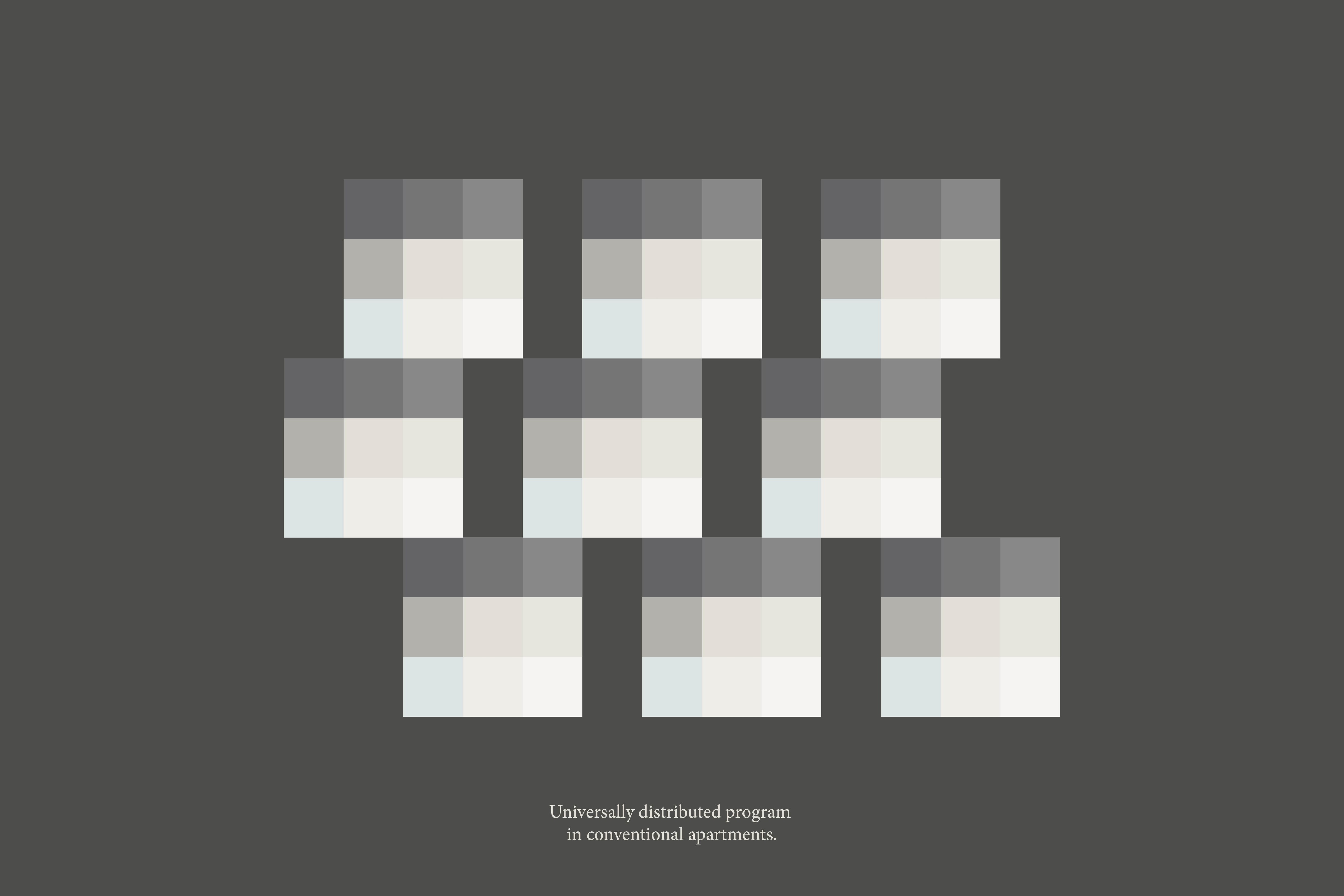
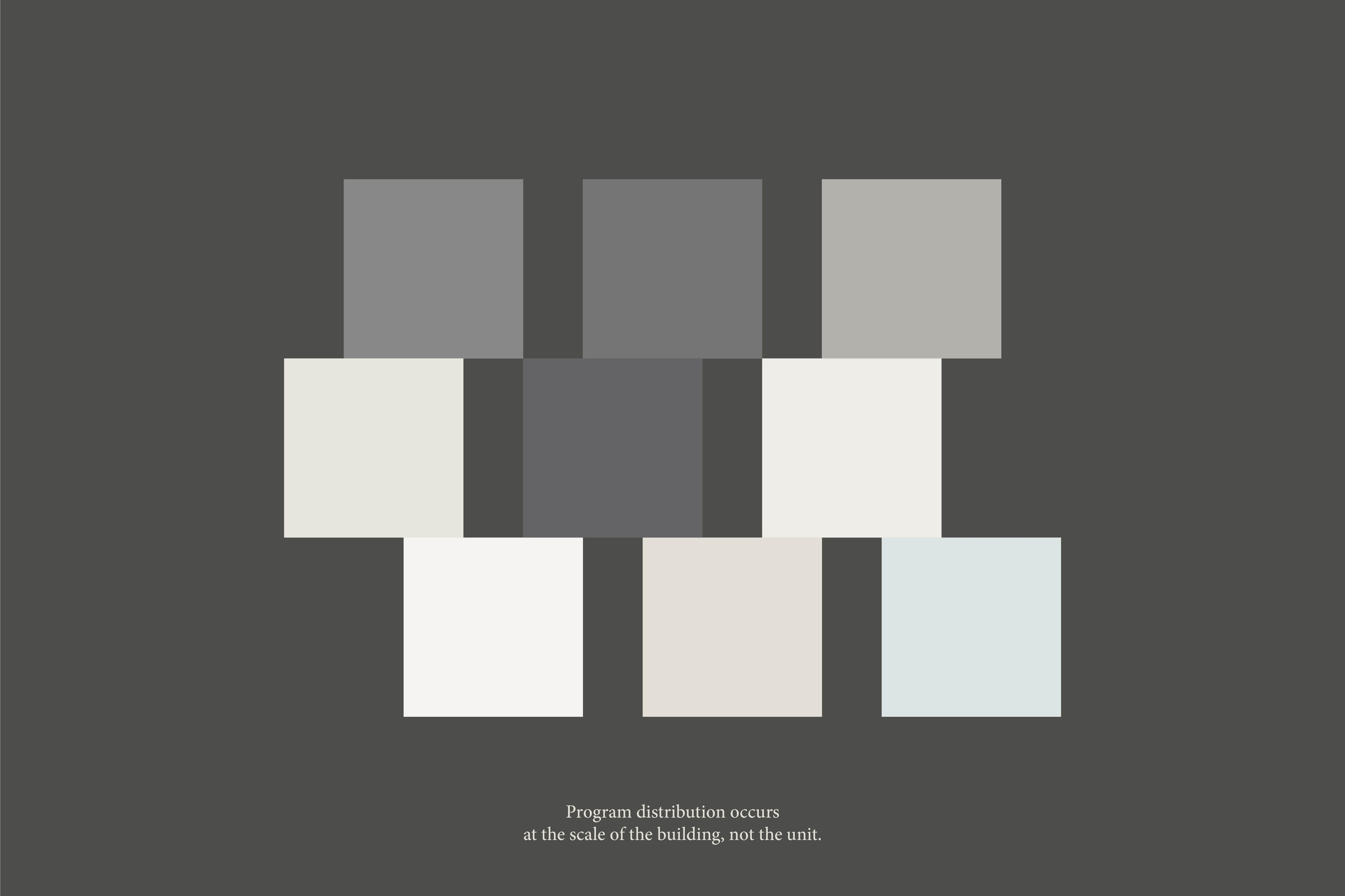
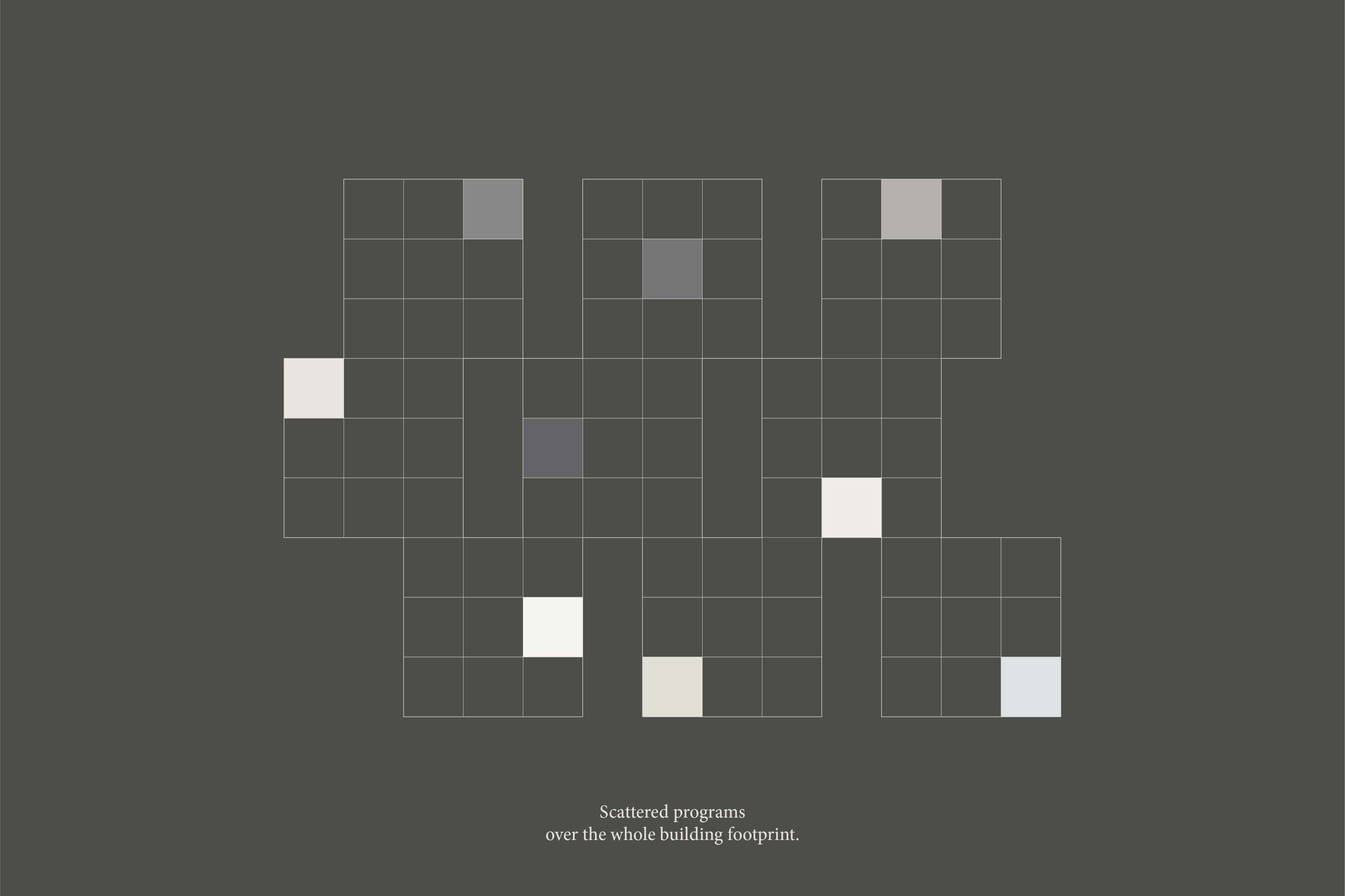
Program distribution occurs at the scale of the building, not the unit, taking advantage of the group form typology to provide a formal separation between internal activities. For example, one volume contains all the kitchens in the building, while another contains all the living rooms.
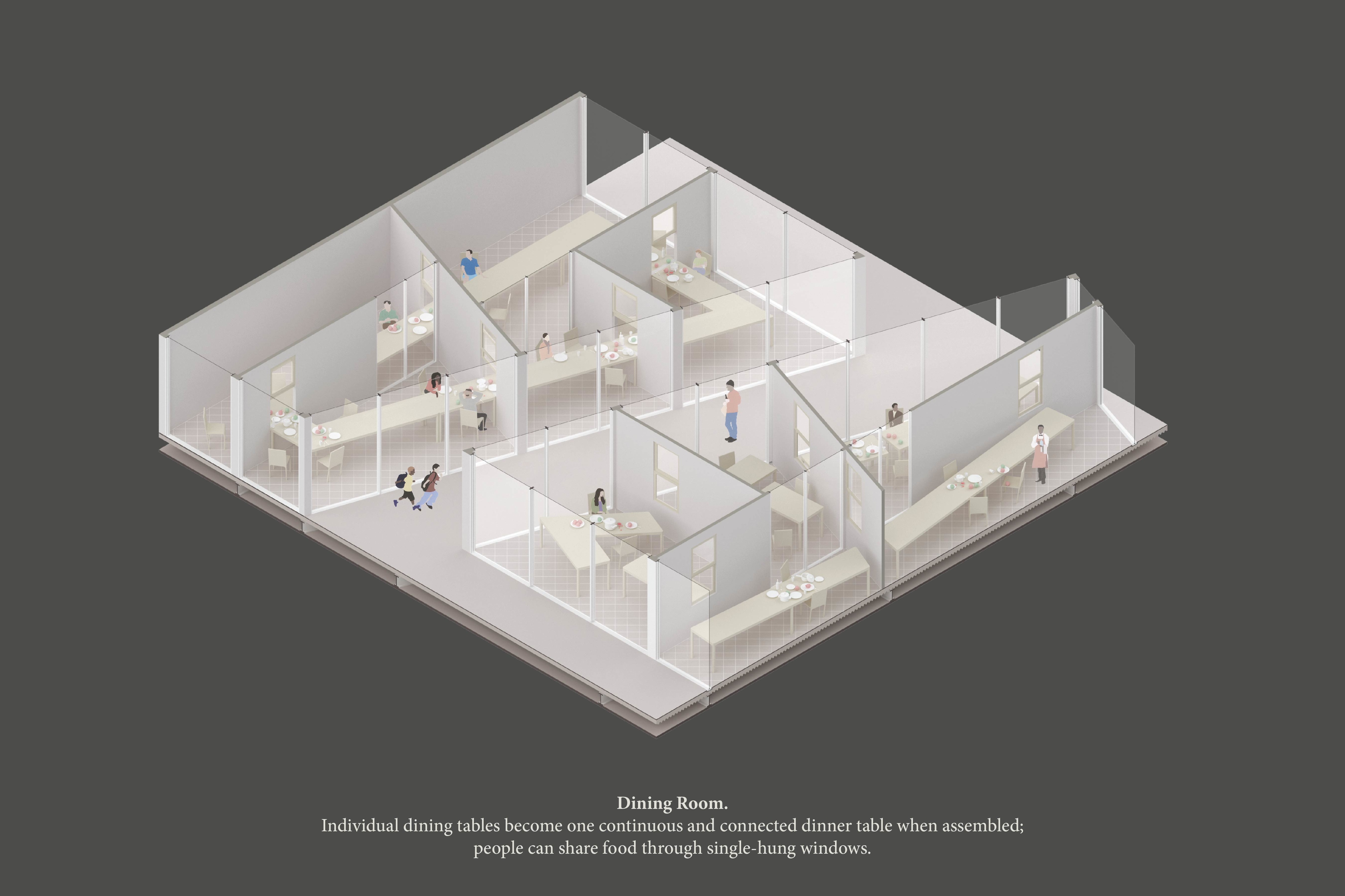
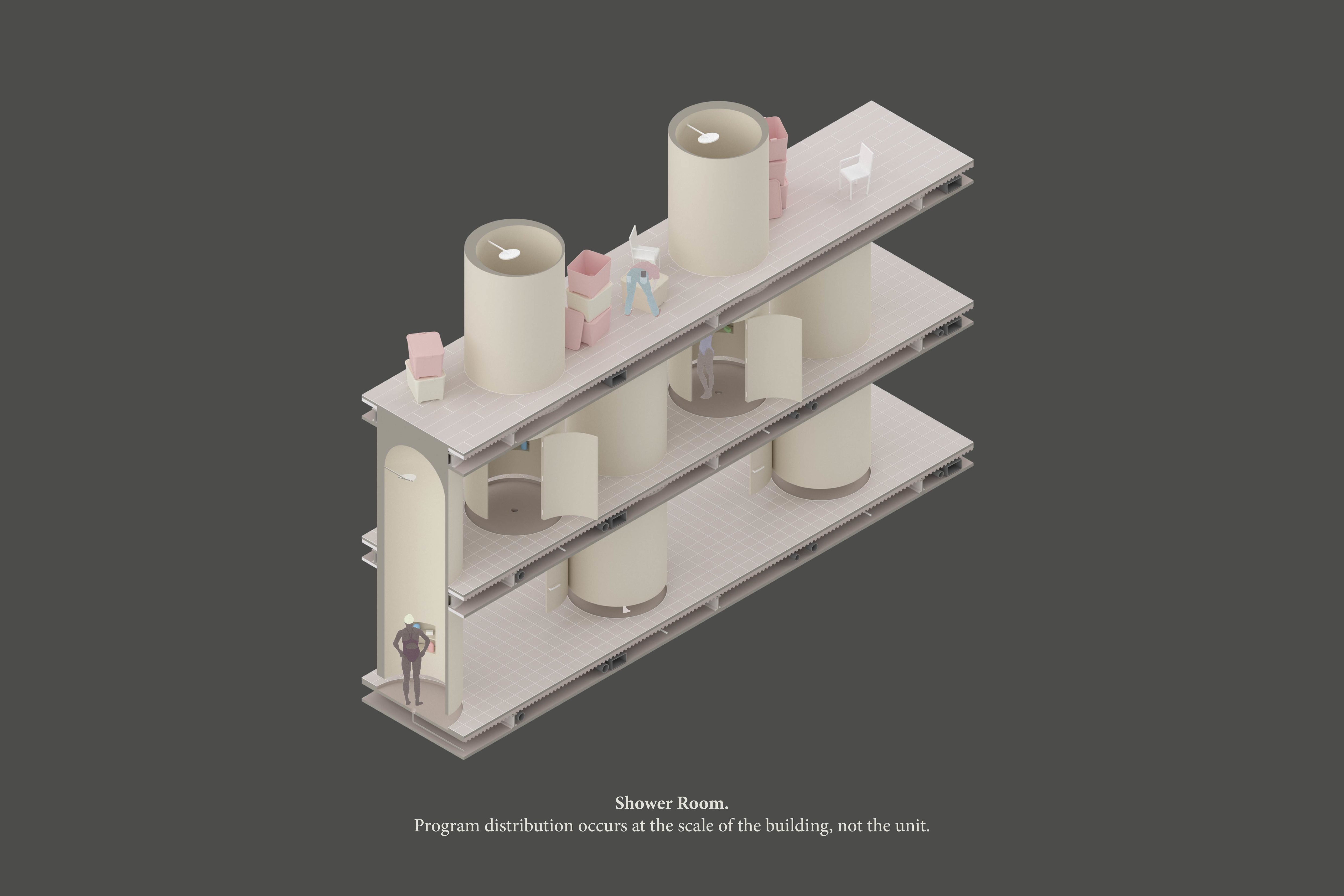
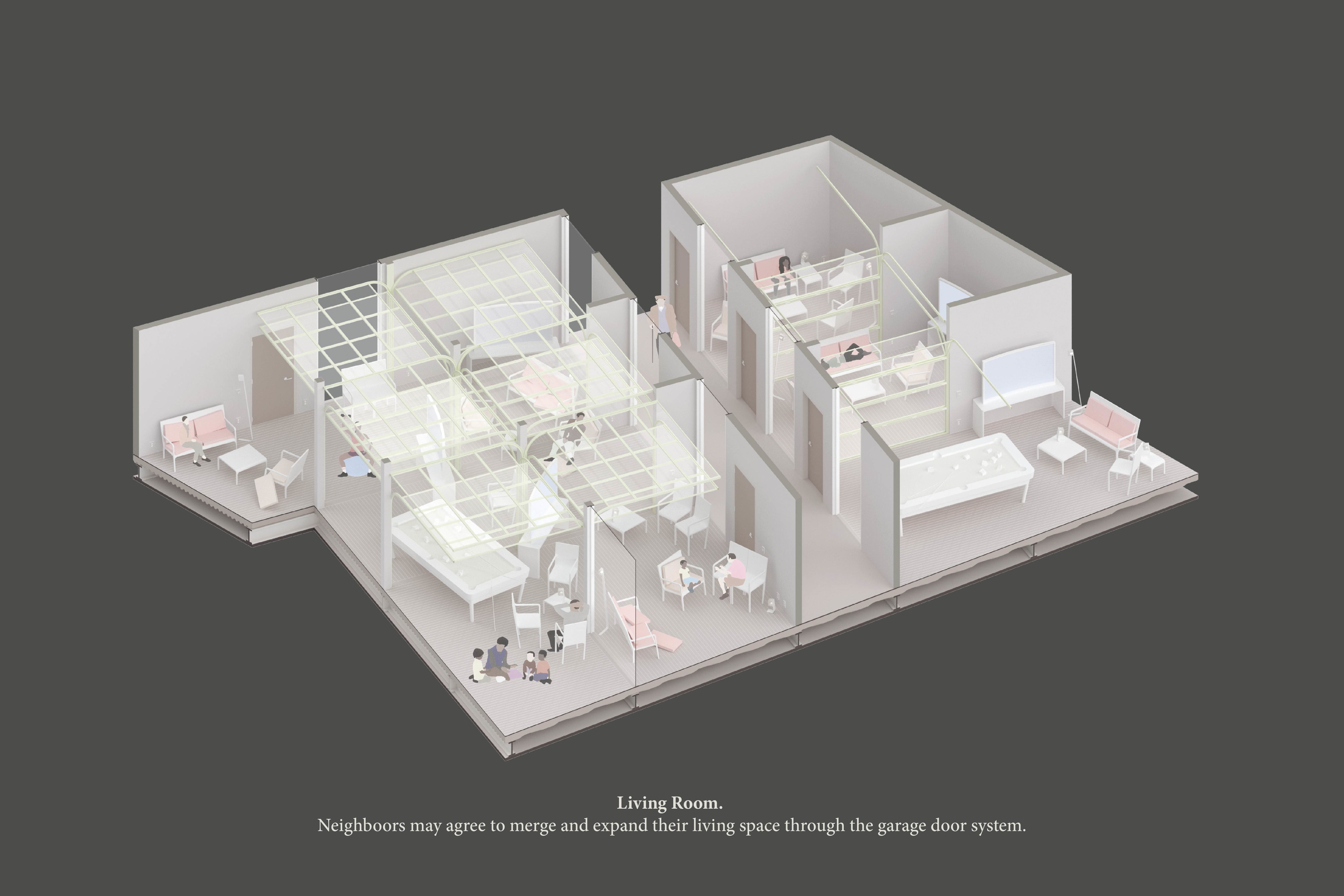
This produces an idiosyncratic floor plan, which adapts to both form and program.


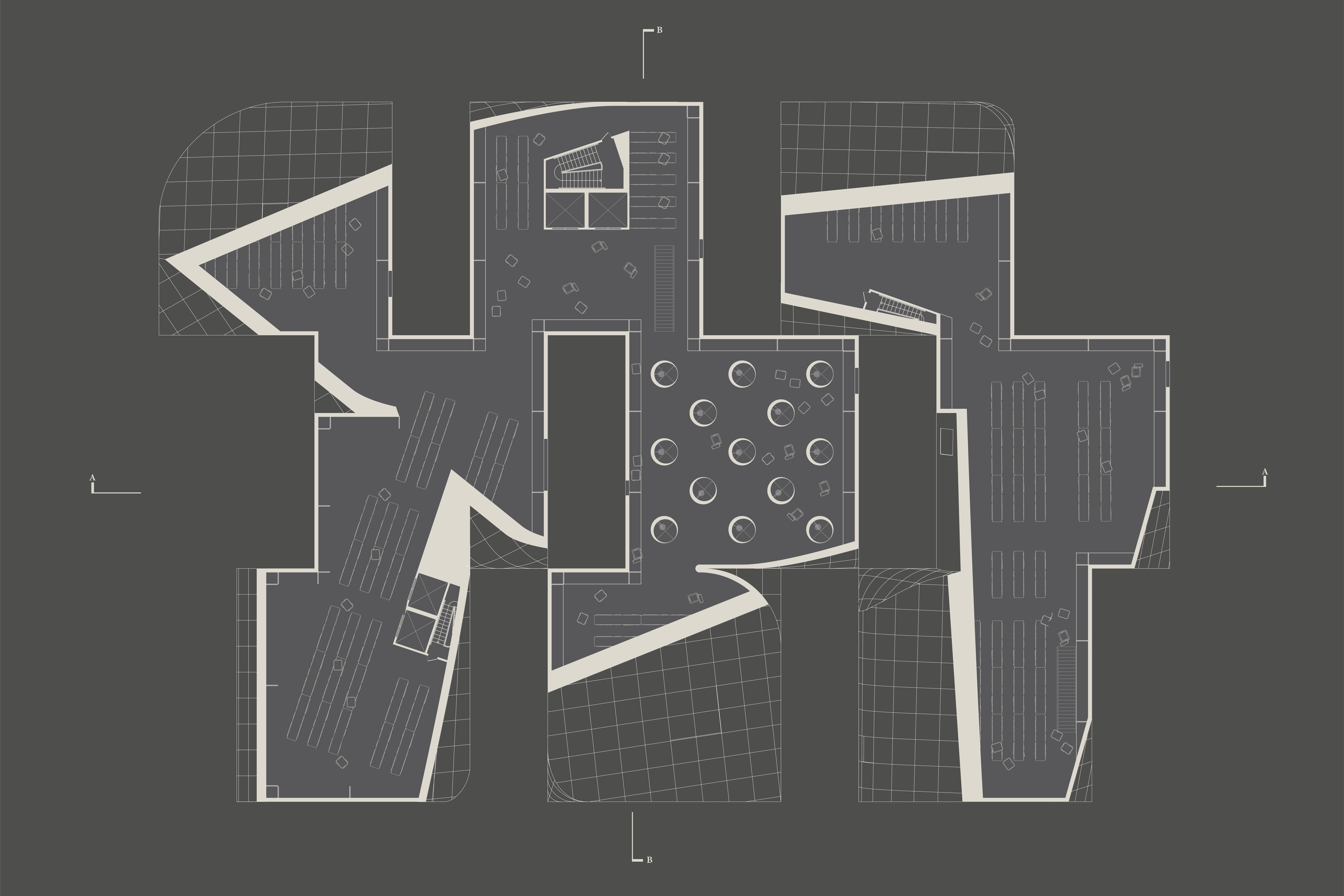
This project begins with an initial interest in group form project typologies, buildings that read as assemblies, and investigates the inevitable part to whole relationships that emerge within these formal compositions. Through the manipulation of rectangular volumes on a cartesian grid by way of conic sections, the project’s form begins to distort itself; it clearly reads as an aggregate, yet the edges of the objects are blurred. It becomes a building of many parts and many wholes.
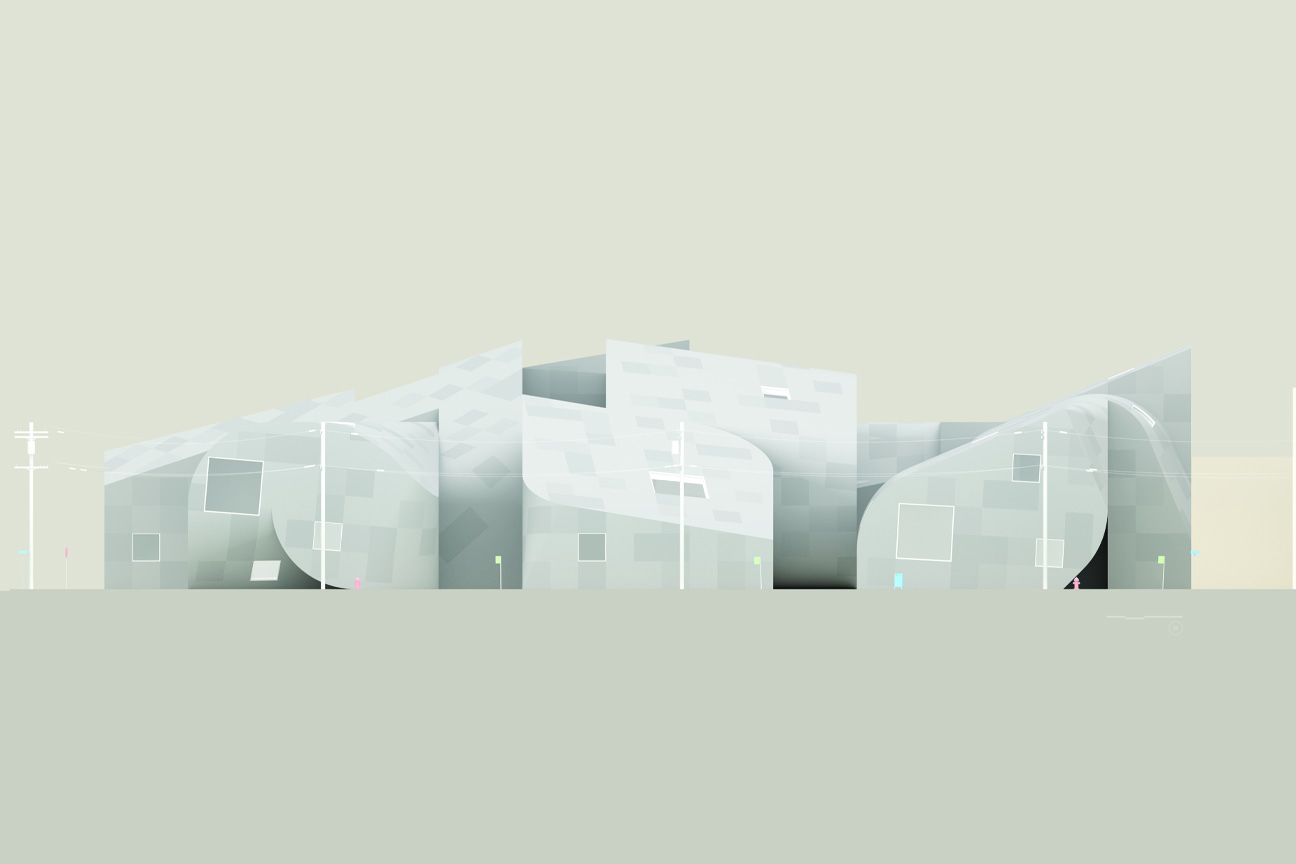

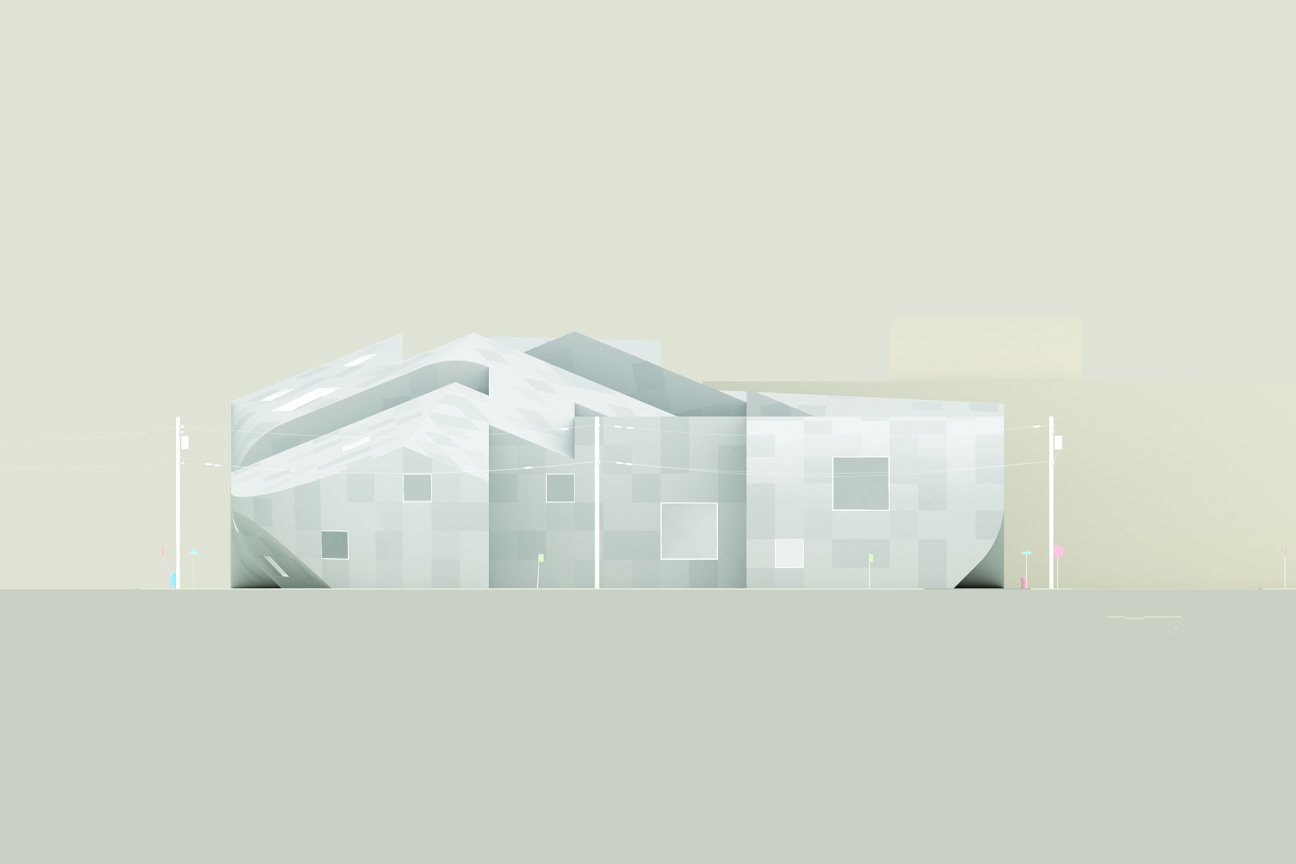



This same conceptual interest (the part to whole misreading) is carried through to the interior (the life) of the project by way of programmatic strategies which aim to foster similar qualities of the exterior— not by means of offsetting but by investigating how potential misunderstandings in the way things are constructed can be architecturally productive.
Through these two independent narratives, the formal construction of the exterior and the internal arrangement of program, this project attempts to use a singular concept and interest as a tool that can generate design in distinctly different ways. The result is an earnest proposal for an alternative home living alone together.
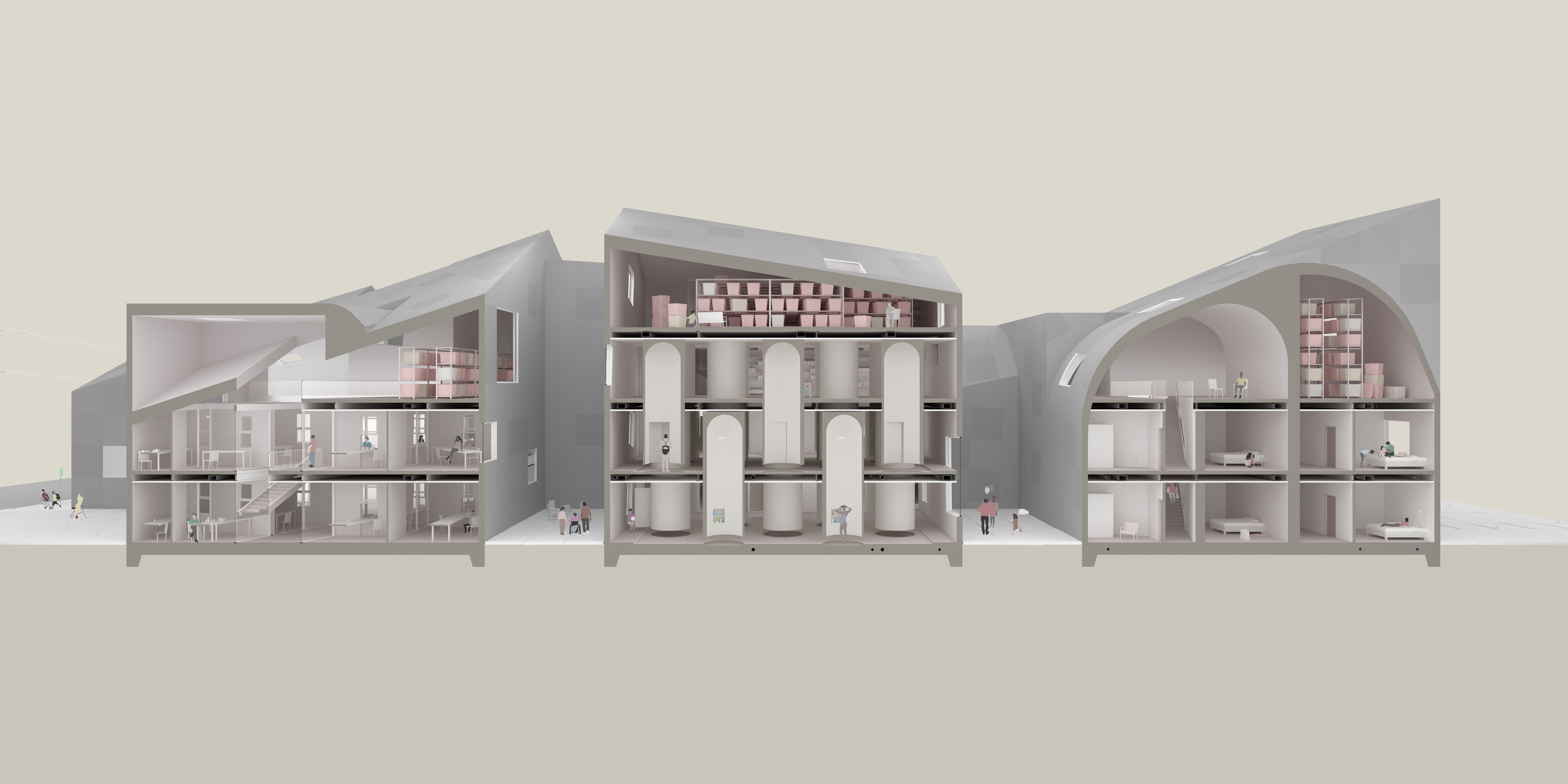
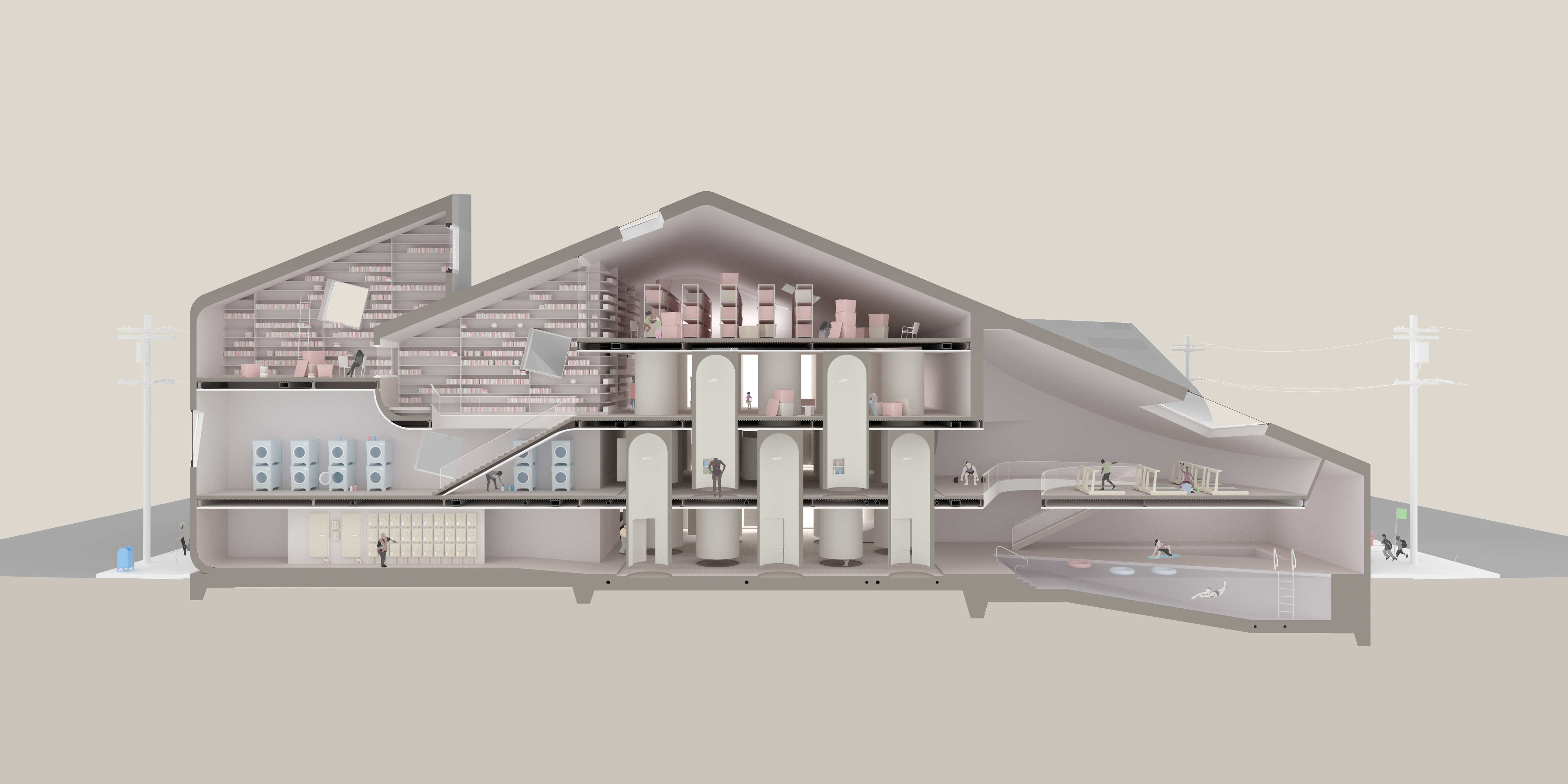
____
Special thanks to Neyran for her amazing studio “Odd Families” where we completed this work.
PUBLICATION:
SuckerPUNCH Daily. March 14. 2019
9th anniversary UC Berkeley Circus Spring Show. March 1. 2019
1st CED Student Exhibition. Wurster Gallery, Berkeley, CA. September 9. 2019